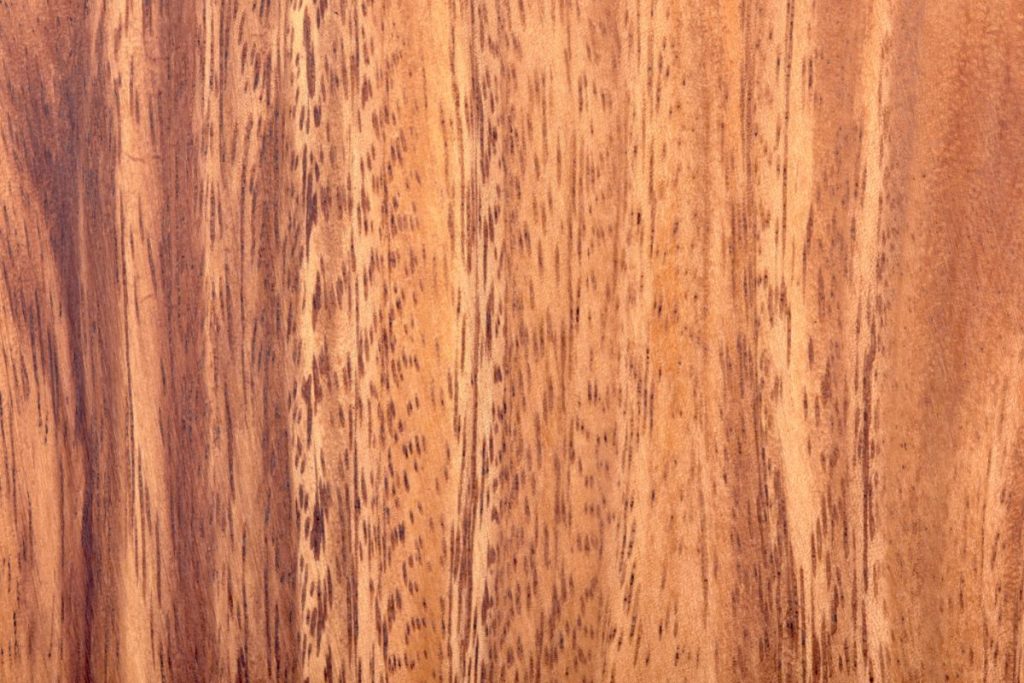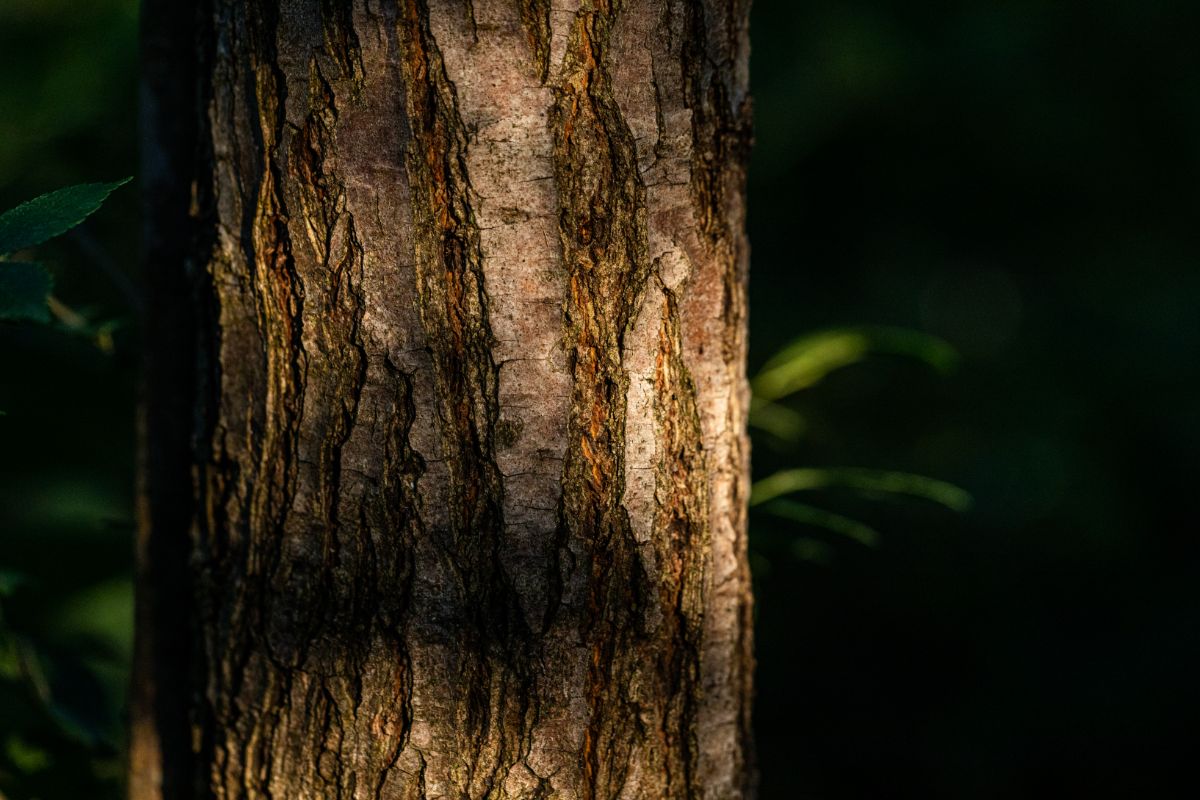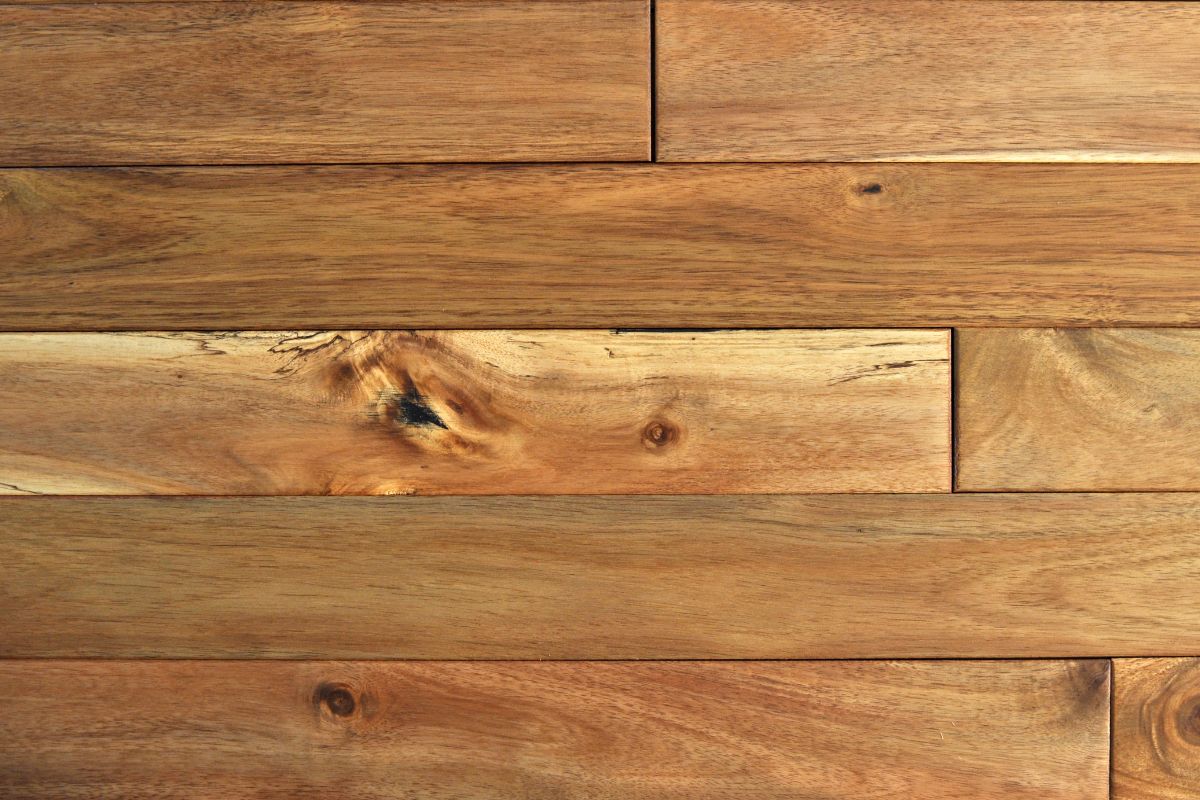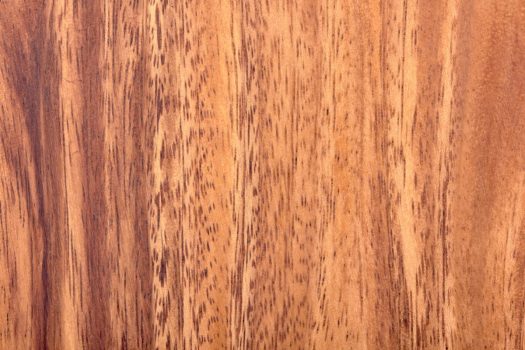Contents
If you have a flooring or woodworking project to complete, acacia wood was probably one of the first materials that crossed your mind. After all, it is one of the most popular types of wood used for these kinds of tasks, renowned for its durability, quality, and natural brown color.

Because acacia wood is durable and has a gorgeous rustic appearance, it’s a popular choice for building high-quality wooden furniture.
With that being said, you should consider some disadvantages and cons of working with acacia wood before ordering your material.
For instance, despite its durability and hardness, acacia wood is not entirely fireproof and is also sensitive to high temperatures. This can reduce its resistance to moisture and cause it to dry out and crack over time. Therefore, careful consideration is needed before using this material for projects exposed to direct heat or water sources.
Some of these cons are pretty major, so it’s important to make sure that you understand the implications of working with acacia wood fully before you embark on your project!
In this guide to the disadvantages of acacia wood, we’ll go into depth about the various species of acacia wood and where they come from, as well as their properties.
We’ll cover some reasons why acacia wood might be a good choice for specific projects such as furniture or flooring, and the main advantages of working with this durable and high-quality wood in addition to the potential drawbacks so that you get a complete picture with which to make an informed decision.
Acacia Wood: What is It?
Acacia wood comes from the Greek word ‘acacia,’ meaning ‘Egyptian tree with thorns.’
Acacia trees can be found in many parts of the world, including Adia, Africa, the Pacific Islands, and certain parts of North and South America. However, acacia trees originate from Australia.
It should be noted that acacia trees go by a few different names, including the Asian walnut and the thorn tree.
Moreover, there are more than 1,300 species of acacia tree across the globe, and they all have their own name, so sourcing this type of wood can sometimes get confusing.
Since acacia trees grow so tall (up to 30 feet in some cases), they can produce large slabs of wood which are now most commonly used for lumber despite acacia wood’s history of being used pharmaceutically, cosmetically, and medicinally.
The Properties Of Acacia Wood
Wood Type
Acacia is a type of hardwood, and not just any hardwood – some studies have pointed to acacia wood as the hardest wood in the world. However, more recent research has indicated that the Australian Buloke ironwood actually holds that title.
Nonetheless, acacia wood is one of the hardest and most durable types of hardwood worldwide, which is impressive.
If you want to assess the hardness of acacia wood for yourself in terms of numbers, acacia wood is rated 2,300 PSI according to the Janka scale.
Compared to hickory, this means that acacia wood is over 20% harder and more than 50% harder than European white oak wood, enhancing its durability and resistance.
General Appearance
One of the main reasons why acacia wood is so popular is simply that it looks fantastic.
You can find acacia wood in various colors ranging from rich mahogany to lighter brown shades, so it’s versatile and fits with many color schemes if you choose the right shade.
Typically, though, this wood has a green-yellow undertone, with the heartwood ranging from dark brown to medium brown. Remember that you can always add a stain to your chosen acacia wood to enhance its color according to your preference.
Part of the beauty of acacia wood is its grain structure. The grain structures within acacia wood slabs are usually irregular and wavy, although you might get a curl pattern if you’re lucky.
These intriguing grain patterns are one of acacia wood’s biggest selling points, adding unique character to any furniture or flooring product.
Wood Knots
There are many knots in your average slab of acacia wood. This is because acacia trees have so many branches, and when the wood is cut, these can be identified in the form of knots.
The presence of these varying knots and grain patterns adds a unique texture, ensuring no two pieces of acacia wood are the same. This unique feature is unlike other woods that might have more uniform textures, enhancing the natural appearance of your wooden products.
Antibacterial Properties
Did you know that acacia wood has natural antibacterial properties? Well, now you do! This is why acacia wood has been used in medicinal and pharmaceutical products for many years.
However, the antibacterial properties of acacia wood aren’t just useful for medicine – they actually make acacia wood the perfect choice for wooden kitchenware. Think spoons, bowls, chopping boards – anything in your kitchen that comes into contact with food.
The difference between acacia kitchenware and kitchenware made of non-antibacterial wood is that acacia products won’t absorb bacteria or allow it to multiply the way that other types of wood do, ensuring better hygiene and durability.
Ways To Use Acacia Wood

Acacia wood has many different uses because of its desirable properties. It’s suitable for a wide variety of woodworking tasks, including:
Hardwood Floors
Since acacia wood is one of the strongest types of hardwood out there, it makes sense to use this wood for hardwood flooring.
Not only is it extremely durable with a very high PSI rating, meaning it won’t be easily damaged by traffic, but acacia is visually appealing and water-resistant.
This means that acacia flooring will add aesthetic value to your home, and this won’t be compromised by cleaning the floor with water.
Kitchenware
Of course, as mentioned above, acacia wood is perfect for making wooden kitchenware because of its durability and antibacterial properties.
Furniture
Probably the most popular use for acacia wood is furniture-making. Acacia makes beautiful pieces of furniture that last for many years due to the impressive durability of this type of wood.
Acacia has an especially fine texture, meaning that furniture made from this wood will not only look nice but also feel great.
Home Improvement
In addition to adding pieces of furniture to your home, you can use acacia wood for other home improvement and decor projects.
The beauty of acacia wood when decorating is that it comes in so many different shades with a unique variety of patterns. Plus, you can easily stain it if you want a specific color.
The Disadvantages Of Acacia Wood

Now that we’ve covered the positives of acacia wood, including all the ways its properties make it suitable for various projects, it’s time to move on to the reason we wrote this article in the first place: to tell you about the potential disadvantages of acacia wood.
While there are many benefits to working with acacia wood, some significant disadvantages might make you think twice before choosing this type of wood for your project. Here they are:
Expensive To Purchase
One of the main obstacles to working with acacia wood is that it’s not budget-friendly. As you might expect from one of the hardest hardwoods in the world, it’s pretty expensive to purchase.
Just a foot-long slab of acacia wood would probably cost you between $8 and $10. Understandably, not everyone is prepared to part with so much money.
That said, acacia wood is still a cheaper option than other types of wood. Mahogany, for example, is more expensive, and since acacia can be found in mahogany shades, acacia wood might be a good budget alternative.
Ultimately, affordability is subjective, but if you’re looking for a budget-friendly wood that will allow you to complete large woodworking projects at a low cost, acacia probably isn’t the best choice for you.
High-Maintenance
Another thing you should know about acacia wood is that it’s very high-maintenance. If you want to keep the wood in good condition for as long as possible, you’ll need to put the work in to maintain your acacia surfaces.
For example, while acacia is extremely durable in terms of physical strength, it is prone to cracking if it gets too dry.
For this reason, it’s important to use a moist cloth to gently wipe down all acacia surfaces, furniture, or items regularly to stop them from drying out.
You might think this isn’t too much maintenance, but it can get tricky because you can’t just use regular cleaning solutions to clean acacia furniture.
Anything with ammonia or silicon in the formula will dry the wood further, so you’re limited to a gentle soap and water formula.
You’ll also need to oil the wood using specific preservatives to prevent the wood from warping, and then apply a finishing oil containing a pigment to protect the wood from UV damage.
All this can be quite time-consuming, and buying the oils you need to keep acacia damage-free can add up financially. For this reason, many people prefer to work with more low-maintenance wood types like cedar or oak that don’t require so much care.
Temperature Sensitivity
If you’re considering using acacia to make outdoor furniture, you might want to think again if you live in a climate with a lot of temperature variation.
Despite boasting a high level of hardness, acacia wood isn’t the most durable when it comes to temperature resistance.
As we mentioned earlier, acacia tends to crack when it starts to dry.
Acacia wood can dry out quickly if the temperatures get too high, meaning that this wood is not the best choice for outdoor use if you live in a particularly hot climate, or even somewhere that experiences a significant rise in temperature at any point during the year.
Temperature fluctuations can have a detrimental effect on acacia wood, so bear this in mind if your country or state of residence experiences fluctuations in temperature over the course of the day.
For instance, if the days are very hot while the nights are very cold, your acacia wood will likely break down quite quickly.
Humid conditions, as well as rain and snow-prone climates, can cause acacia wood to swell, so you definitely won’t want to use acacia wood outside if you live somewhere that matches this description.
If you’re set on using acacia wood for outdoor furniture, especially if you live in a temperamental or extreme climate, please take extra measures to protect your acacia furniture.
You could rotate some of the furniture so that each piece spends some time indoors to protect it from the elements. Also, make sure that your furniture is never exposed to any direct heat source – don’t leave it sitting in the sun or in front of the fireplace for hours.
Tough And Heavy
Although the hardness and durability of acacia wood can undoubtedly be a good thing, it can also make this wood quite tricky to work with.
For one thing, hardwood is difficult to cut through. With acacia wood being rated 2,300 PSI according to the Janka test, you can probably imagine that you’ll struggle to cut through this with a hand saw.
You’ll need to invest in some power tools to achieve clean cuts with acacia wood. For context, if you have ever worked with maple wood, you’ll know how hard that is to cut through – and maple only has a rating of 1,450 PSI.
If you’re familiar with bamboo wood, you can expect acacia wood to be just as tough to work with.
Acacia wood is also hard to maneuver owing to its weight. This is a heavy type of wood, and if you’re going to be cutting and joining boards of acacia yourself, you’ll need to move the wood a lot, including lifting and turning it over.
If you’re working with someone else who can help you, this may not be an insurmountable problem, but if you’re working alone, carefully consider whether a lighter wood like cedar might work for you.
Irregular Grain/Knots
The last thing that can put people off working with acacia is that the grain is irregular and can’t be predicted.
Now, this might not be an issue depending on the look you want for your furniture or flooring. However, acacia wood is the wrong choice if your preference is a straight grain pattern that you can predict easily.
Aesthetically speaking, working with acacia wood can be frustrating for people who prefer regular patterns. However, it’s not just the appearance of your finished project that you need to worry about.
Acacia wood also has a lot of knots because of the tree’s numerous branches, as we discussed earlier.
These knots not only appear in unpredictable places within the wood, but they can also be present in various forms. For example, you can have encased knots, unsound knots (also known as loose knots), or sound knots (tight knots).
In some cases, knots can break fibers in the wood, weakening it. Now, if you’re just making a wooden spoon, this may not matter because you don’t need it to be the strongest spoon in the world.
However, weak areas are a real problem if you’re making something that will be load-bearing, like a bed frame.
Before you decide to work with acacia wood, consider what you will be using it for and whether the knots might make acacia unsuitable for your plans.
Frequently Asked Questions
How Long Does Acacia Wood Last?
It’s difficult to say precisely how long acacia wood structures will last because it depends on how many knots are in the slabs of wood you use and the conditions to which the wood is exposed.
However, acacia is very durable, and if you take good care of it using the methods described above, you can expect your furniture to last throughout your lifetime.
Even if you don’t take care of your furniture properly, acacia wood is durable enough that it may last up to 3 decades.
Is It Safe To Use Acacia Wood?
Most of the time, acacia wood is safe to work with. However, certain species come with a risk of toxicity. For example, Acacia Nilotica is a tree known for its poisonous leaves, which means the wood may be toxic to some extent.
It’s important to be aware of this because the poison produced by Acacia Nilotica leaves is cyanogenic (cyanide) and can lead to brain and heart failure as a result of oxygen deprivation. Again, this is not a problem with most acacia wood species.
Is Acacia A Sustainable Choice?
Because acacia wood can regenerate quickly, it can be considered a sustainable choice. Additionally, since acacia is so durable and long-lasting, it doesn’t need to be constantly replaced.
This makes it much more sustainable than some softer, less durable wood types that break easily and then need to be replaced. Acacia wood comes from trees that have been sustainably harvested.
Final Thoughts
Acacia wood is beautiful, durable, sustainable, versatile, and antibacterial, so it’s not surprising that it’s so popular with woodworkers. Nonetheless, acacia wood has a few disadvantages.
Acacia is not the best choice if you’re not prepared to put effort into maintenance. It’s also challenging to work with, because it’s such a heavy hardwood. Since this wood is extremely temperature-sensitive, using acacia for outdoor furniture comes with risks.
The irregular grain and knots in the wood can pose problems both structurally and aesthetically, and it’s also not very budget-friendly.
Before buying acacia wood for your next woodworking project, make sure you’re prepared to confront the potential difficulties of working with this type of wood.







